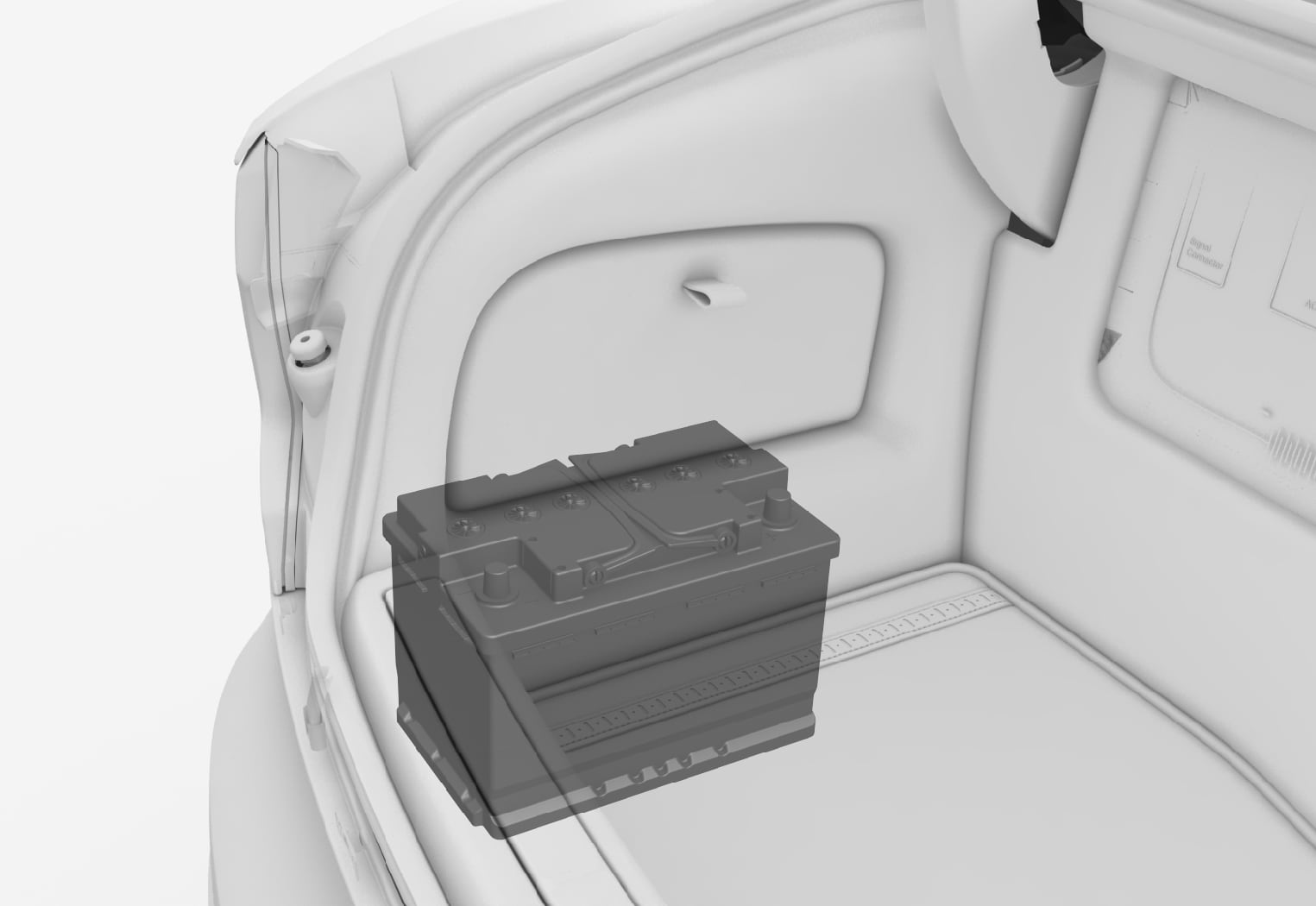Start battery
The start battery is a 12 V AGM (Absorbed Glass Mat) battery, dimensioned for regenerative charging and to support the function of the vehicle's various systems.
- Never disconnect the start battery while the engine is running.
- Make sure the cables to the start battery are correctly connected and the clamps are securely tightened.
Warning
- Batteries generate hydrogen gas, which is flammable and explosive. A spark caused by an incorrectly connected jumper cable could be enough to make the battery explode.
- Do not connect the jumper cable to any part of the fuel system or to any moving parts. Avoid touching hot manifolds.
- Battery fluid contains sulfuric acid. Do not allow battery fluid to contact eyes, skin, fabrics or painted surfaces.
- If contact occurs, flush the affected area immediately with water. Obtain medical help immediately if eyes are affected.
- Never expose the battery to open flame or electric spark. Do not smoke near the battery. Failure to follow the instructions for jump starting can lead to injury.
Start battery service life and capacity
The service life of the start battery is affected by several factors, including number of starts, battery discharges, driving style, driving conditions, climate, etc. The capacity of the start battery reduces gradually over time and the battery therefore needs to be charged if it isn't use for a prolonged period of time or if it is only driven for short distances. Extreme cold further limits start capacity. Many discharges will adversely affect the service life of the start battery.
To help keep the start battery in good condition, drive at least 15 minutes per week or connect the battery to a battery charger with automatic maintenance charging. A start battery that is always fully charged maintains its maximum service life.
Location







